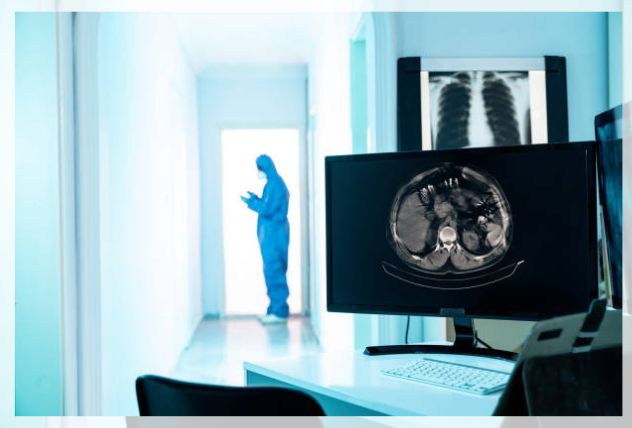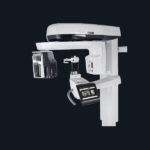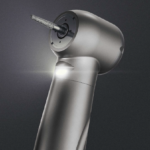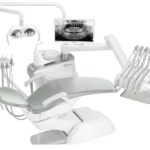Radiation therapy is a cancer treatment that tends to use high-energy waves to damage or destroy cancer cells. The waves can help stop the cancer cells from growing and making more cancer cells by affecting the DNA inside them.
However, in some cases, it can also damage noncancerous cells.
Radiation therapy tends to target the affected area with high energy waves, often the location of the tumor or where the tumor was removed during surgery to destroy any remaining cancer cells.
In some cases, this type of treatment plan is ideal as it allows the doctor to only affect certain parts of the body, unlike other cancer treatments like chemotherapy.
Chemotherapy, on the other hand, can affect cells in the entire area of the body of the patient.
A patient will see lower doses of radiation in other parts of the medicine like X-rays.
Furthermore, according to the American Cancer Society, more than half of people with cancer undergo radiation therapy.
It can be the only treatment, or the doctor can give the patient other treatment options like surgery and chemo.
Keep on reading.
Types of Radiation Therapy
There are two types of radiation therapy and a doctor will consider a number of factors when deciding which is best for the patient, including:
- cancer type
- tumor size
- location of the cancer
- the proximity of cancer to other tissues sensitive to radiation
- overall health and well-being of the patient
- whether they will need other cancer treatment
- age
External Beam Radiation Therapy
With external beam radiation therapy, a large machine will send radiation waves to the site of cancer from outside the body.
However, the patient cannot see the rays and the apparatus does not touch the body of the patient, however, it moves around the body.
The movement allows it to send radiation from many different directions.
It is important to note that doctors use this type of radiation as a local treatment to target specific parts of the body.
For instance, when doctors use it for breast cancer, the radiation is targeted only at the chest of the person instead of the whole body.
Learn more about Mammogram Screening here.

Internal Radiation Therapy
The doctor can perform it in different ways.
With brachytherapy, a doctor can implant a source of radiation into the body of the patient ear the cancer side.
The sources of radiation are often in the form of:
- capsules
- ribbons
- seeds
- balloons
- wires
- tubes
- liquid
Moreover, this process often takes place inside an operating room in order to contain radiation.
Doctors and technicians will use imaging tests to make sure that the implant goes in the place it needs to.
The doctor may give general anesthesia to put the patient to sleep during the procedure.
Or they may receive local anesthesia to numb the area where they are receiving the implant.
Furthermore, depending on the strength of the radiation and the size of the location of the implant, the patient may need to stay in the hospital for a few days for treatment.
If the implant is smaller, the person may be able to go home after the treatment.
However, they will likely have specific guidelines and precautions to follow.
Radiation remains a local treatment that helps to tackle a specific part of the body.
When receiving radiation in liquid form, the doctor will administer it via the mouth, IV line, or injection.
The bodily fluids may also give off radiation for some time after the test.
However, for skin cancers, this type of radiation may be applied directly to the skin.
Learn more about Medical Imaging here.
Benefits of Radiation Therapy
Radiation therapy is an essential tool for treating cancer and doctor can often use it with other therapies like chemotherapy, or tumor removal surgery.
The main aim of this therapy is to shrink tumors and kill cancer cells.
Moreover, there are a number of reasons why doctors may choose to treat cancer with radiation.
They can use it to:
- destroy cancer cells
- shrink the tumor

- stop cancer from coming back
- treat cancer symptoms
For instance, one study discusses the effects of using radiation to treat cancer that has spread to the bones.
The overgrowth of cancer cells puts pressure on the nerve endings inside the bones and cancer cells also cause the muscles to spasm.
These can lead to pain. Radiation therapy can help to relieve that pain by preventing the cancer cells from growing and reducing the amount of inflammation around the part of the body where the cancer is.
Though it cannot cure cancer, however, it can help halt the growth and increase the quality of life of the patient with less discomfort.
Possible Side Effects
Every person reacts to radiation therapy differently and it is best to consider the side effects, though the person may not experience all or any of them.
The location and treatment depends on the type of cancer, along with the general health of the patient may affect the severity and number of side effects.
Moreover, any pre-existing conditions the person may have before receiving the diagnosis of cancer can also affect how they respond to treatment.
-
stereotactic body radiation therapy SBRT
-
image-guided radiation therapy IGRT
-
intensity modulated radiation therapy IMRT
These help to treat many types of cancer and area of cancer treatment that uses high energy may have side effects.
Some side effects can be seen at the time of treatment or just after.
However, the person may experience long-term side effects months or years after radiation.
Therefore, the patient should consider discussing and planning for these side effects with the doctor in advance.
They can help determine how to prevent or manage them when possible.
The most common side effects of radiation are:
Fatigue
When the patient experiences fatigue, they may feel tired or have low energy.
Moreover, they can also feel drained after deliver radiation as some of the healthy cells in the body may be damaged along with cancer cells.
As the patient continues with more treatments, they may feel tiredness grow.
The duration and severity of fatigue due to radiation may be different depending n the type of treatment.
In most cases, people receiving radiation therapy will begin to feel fatigued around the third week of treatment and fatigue often gets worse by the sixth week of the treatment.
It can also stay that way until the treatment is complete.
If a person experience symptoms of fatigue, they should let the doctor know. They will want to monitor the condition of the patient and may suggest specific strategies to help.

Skin irritation
At the radiation site, the skin may start to change and the severity of that change can range from minor redness to developing sores.
Radiation dermatitis is a common reaction to treatment and a patient may experience dryness and notice skin flaking.
However, it can also reach deeper layers of the skin, leading to blistering, pain, and bleeding.
In order to avoid radiation dermatitis, the doctor can suggest:
- practicing proper skin hygiene using only warm water and mild soaps
- avoid any oil-based lotions or creams
- wear loose-fitting clothing
- avoid sun exposure and extreme temperatures
- use steroid cream or gel-like hydrocortisone
Furthermore, it is important for the patient to tell the doctor about any skin changes the patient experiences so that they can help ease discomfort and monitor the healing process.
In some cases, the problem goes away on its own after the treatment completes.
Certain parts of the body of the patient may also swell.
For instance, if the person is receiving treatments for breast cancer, the rays may cause the breasts to swell due to fluid buildup or lymphedema.
Other Side Effects
Other side effects of radiation are:
Hair Loss
If a patient is receiving radiation therapy in places of the body that have hair, they may experience hair loss around the site.
For instance, if the radiation therapy is targeting the head, the patient may lose some or all of the hair.
The hair, however, may grow back after treatment. However, the patient will want to take steps to protect the scalp and site from radiation.
For instance, if the patient wears a wig, then they should make sure that the lining n does not rub and irritate the scalp.
It may also help to wear a hat or scarf when out in the sun to further protect the skin.
Pain
As radiation therapy causes swelling and kills healthy cells, the body may react with pain.
Moreover, the doctor treating cancer may suggest ways to manage pain, including medication and other therapies.
Low Blood Cell Counts
As radiation kills cancer cells, it can also kill healthy cells in the body that are responsible for helping the patient fight infections and stop bleeding.
If the blood cell count becomes too low, the doctor may pause the treatment until they come back up to a specific level.
Radioprotective Drugs
The doctor may prescribe medication; or radioprotective drugs that work to protect healthy tissues from radiation.
These medications only work for certain types of radiation and parts of the body, but may be effective in reducing side effects.
Site-Specific Side Effects
When a patient receives radiation to specific body parts, like the brain or neck, they make experience other site-specific side effects. These can include:
Brain: Hair loss, headaches, nausea, vomiting, hearing loss, seizures, brain fog, and forgetfulness.
Head and Neck: Mouth and throat sores, dry mouth, trouble swallowing, changes in taste, earache, tooth decay.
Breast: Skin changes include irritation, dryness, and color, breast soreness, and breast swelling
Chest: Sore throat, cough, shortness of breath, heart complications, radiation pneumonitis, chest pain, early coronary artery disease
Abdomen: Nausea, vomiting, cramps, diarrhea, constipation
Bladder: Pain or burning with urination, difficulty urinating, blood in urine, increase in the frequency of urination, urinary incontinence
How to Protect the Skin
Skin changes are a side effect of getting radiation and the patient may need to take extra steps to protect it.
Some ways to do this include:
- avoid wearing tight clothing or elastic over the area where a person is receiving treatment
- use only paper tape on the affected area and avoid adhesive tapes
- avoid scratching, scrubbing, and rubbing the area
- the patient should talk with the doctor before using a heating pad or ice pack on the side
- they should talk with the doctor about using sunscreen on the spot to further protect it from sunlight
- use only mild and lukewarm water when cleaning the area while also avoiding scrubbing
- make sure to talk with the doctor before shaving the area
- ask the doctor before applying any substance like creams, perfumes, or deodorants on the spot
Learn more about Medical Tape: Things You Should Know here.
Preparing for Radiation Therapy
External beam radiation and brachytherapy both begin with a meeting to plan the treatment.
A doctor will examine the person, ask about their health, and discuss the therapy, while in some cases, may also request imaging.
A person who decides to have external beam radiation, however, will meet the radiation oncologist and a radiation therapist for a planning session: Stimulation.
A radiation therapist can put small marks on the skin of the patient to show where to direct the energy beams.
These makes can either be temporary or in the form of a tattoo.
Moreover, healthcare professionals can also create a body mold that they may use to make sure that the person is in the correct position while receiving radiation therapy.
When a person is receiving radiation to the head or neck, they may need to use a face mask to keep their head in place during treatment.
Procedure of Radiation Therapy
What to expect during radiation therapy will differ depending on the type of therapy a person receives:
External Beam Radiation
During this session, a person will lie on the table beneath a large machine and the radiation therapist will position the individual in a machine and go into a separate room.
Although the person must try to stay still during the treatment, they often do not have to hold their breath.
The machine will make whirring, clicking, and vacuum cleaner-like noises.
A speaker system in the room will allow the person to talk with the radiation therapist during the treatment.

Internal Radiation Therapy
During brachytherapy, a treatment team of the person will use a tube: catheter, or a large device; an applicator to insert a radioactive implant.
Once the catheter or applicator is in position, the doctor will place the radiation source inside it.
In some cases, however, the implant will remain in the body for up to a few days before the doctor removes it.
While in others, the doctor may place the implant in the body for a shorter time, like 10 to 20 minutes, and repeat the treatment periodically for as long as several weeks.
Once the course of treatment is complete, the doctor will remove the catheter or applicator.
In some cases, the implant will remain in the body permanently but it will stop releasing radiation after some time.
Outlook
Radiation treatment alone may be enough to cure certain types of early-stage cancer, However, NCI notes that studies indicate that cancer treatment outcomes are better if a person receives both radiation and chemotherapy following surgery.
Moreover, it is important to note that a person cannot receive an unlimited amount of radiation. Therefore doctors will restrict the therapy to one part of the body and limit the total amount that person receives over their lifetime.
Though radiation therapy itself does not cause pain, the treatment can cause painful side effects, and thus, a person should make the treatment team aware if they are in pain.
Undergoing radiation can affect the ability of a person to have children. Thus, it is advisable to discuss this possibility with the doctor before starting treatment.
According to the ACS, radiation therapy can slightly increase the risk of getting another cancer. A person, however, should weigh the potential risks and benefits when deciding on cancer treatment.




